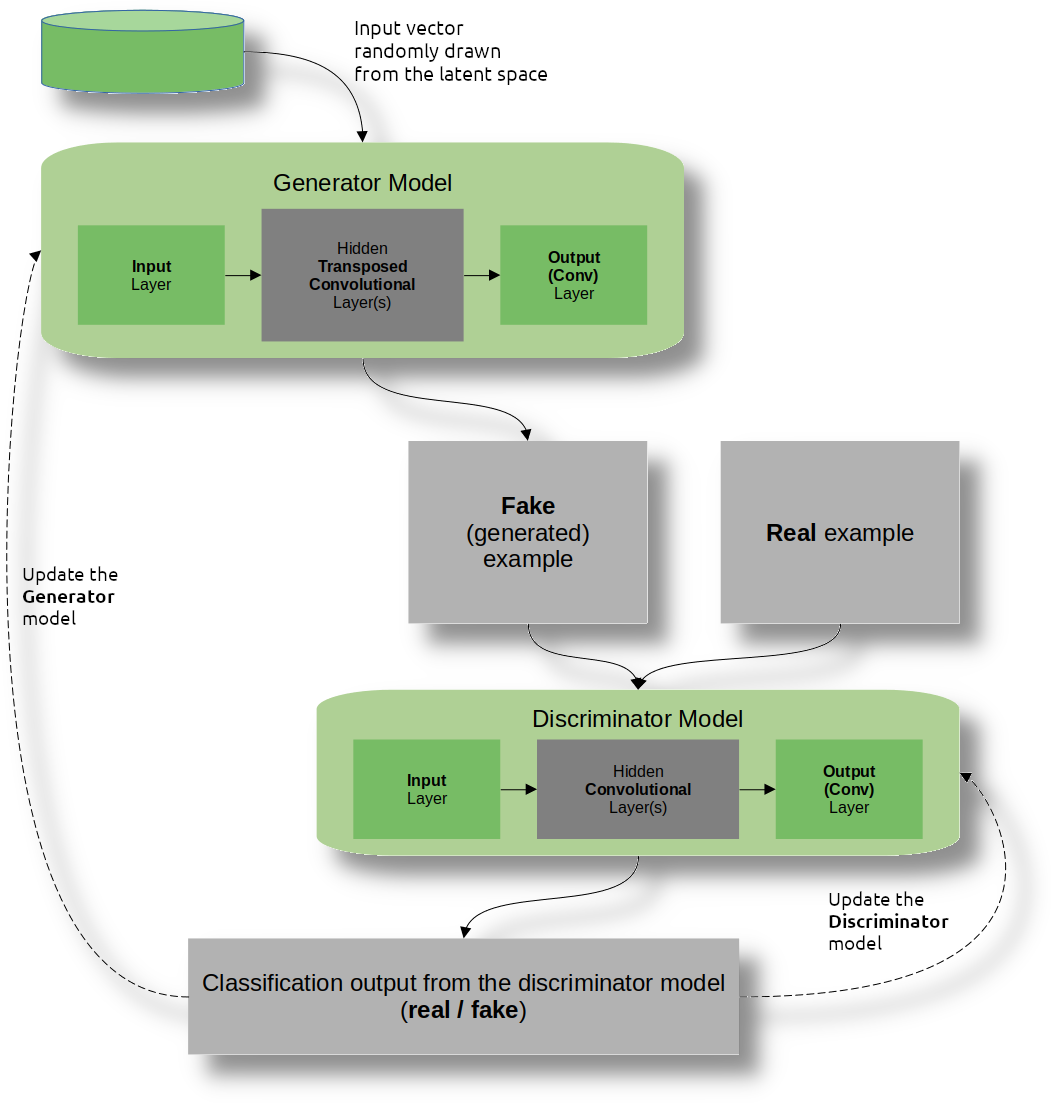
Introduction to GANs with TensorFlow
Last Updated on July 25, 2023 by Editorial Team
Author(s): Rokas Liuberskis
Originally published on Towards AI.
In this tutorial, we’ll cover the basics of GANs (Generative Adversarial Networks) step-by-step in TensorFlow. As an example, we’ll use a basic MNIST dataset

Hello everyone! I’ll introduce you to Generative Adversarial Networks in TensorFlow in this tutorial. To simplify everything, we will use the MNIST digits dataset to generate new digits! First, it is better to start with DCGAN instead of simple GAN. You’ll get the results you want faster. The only difference is that DCGAN uses deep Neural Networks instead of simple ones. The Generative Adversarial Networks' goal is to generate new data similar to the training data.
The diagram below illustrates how the two models interact within the GAN architecture.
The dataset used in this tutorial is MNIST — a collection of 28×28… Read the full blog for free on Medium.
Join thousands of data leaders on the AI newsletter. Join over 80,000 subscribers and keep up to date with the latest developments in AI. From research to projects and ideas. If you are building an AI startup, an AI-related product, or a service, we invite you to consider becoming a sponsor.
Published via Towards AI
Take our 90+ lesson From Beginner to Advanced LLM Developer Certification: From choosing a project to deploying a working product this is the most comprehensive and practical LLM course out there!
Towards AI has published Building LLMs for Production—our 470+ page guide to mastering LLMs with practical projects and expert insights!

Discover Your Dream AI Career at Towards AI Jobs
Towards AI has built a jobs board tailored specifically to Machine Learning and Data Science Jobs and Skills. Our software searches for live AI jobs each hour, labels and categorises them and makes them easily searchable. Explore over 40,000 live jobs today with Towards AI Jobs!
Note: Content contains the views of the contributing authors and not Towards AI.














